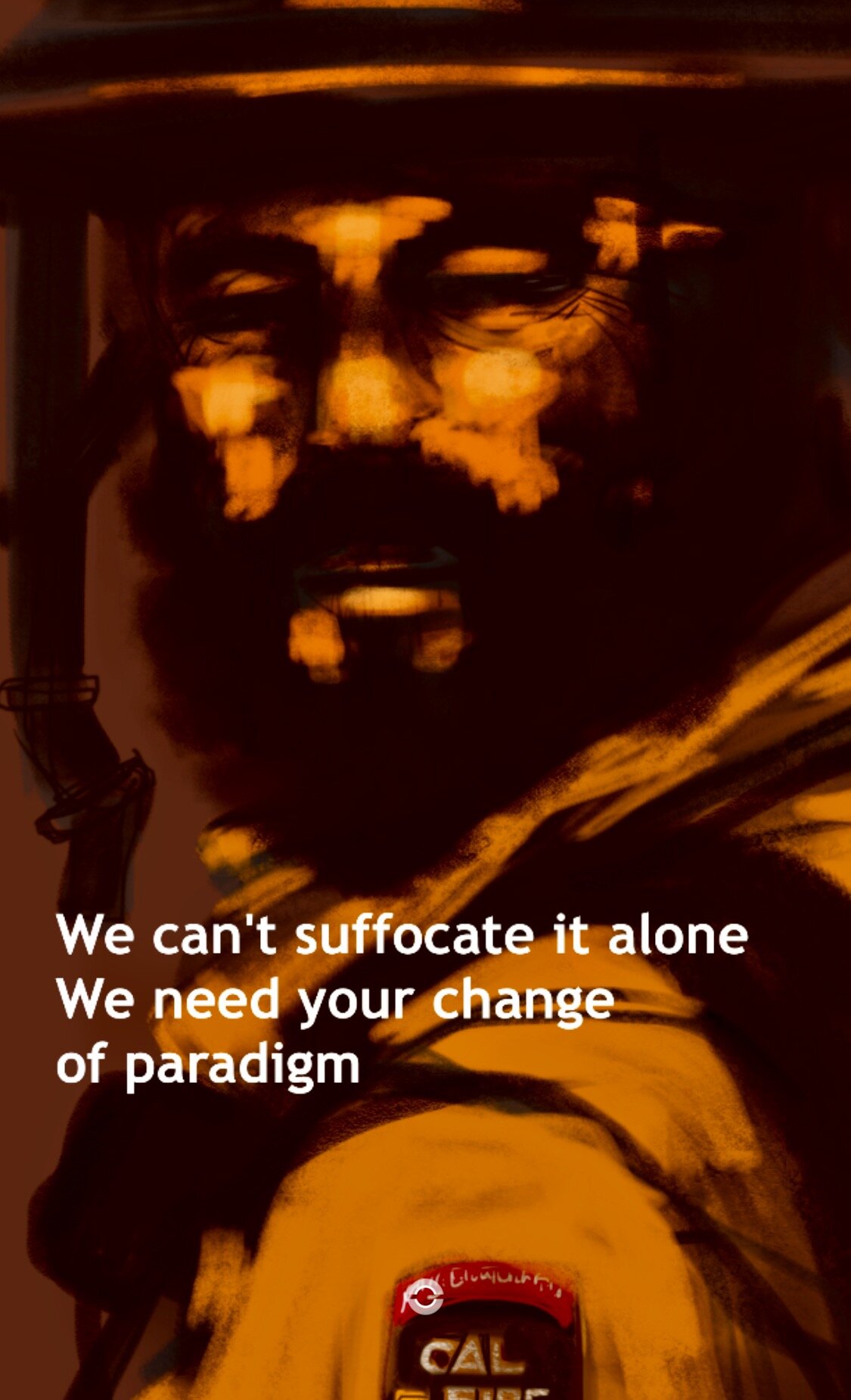

Carr Fire CATlines: The Environmental Impacts of Bulldozers in Wildfire Suppression
Bulldozer firelines or "CATlines" cause extensive, lasting environmental damage and destroy Native American heritage sites. In the era of climate change, they are rapidly becoming ineffective in stopping wildfire spread during severe weather conditions. The 2018 Carr Fire offers a case study for the kinds of damage caused by catlines whose scars still remain on the landscape.


A New Direction for California Wildfire Policy— Working from the Home Outward
Compiled by Douglas Bevington, Forest Director, Environment Now California Program
California’s state policies on wildfire need to change direction. The current policies are failing. They have not effectively protected homes, while they place dramatically increasing pressures on state and local budgets. Moreover, these policies are often based on notions about the role of fire in California’s ecosystems that are not supported by sound science and do not reflect the changing climate. These policies try to alter vast areas of forest in problematic ways through logging, when instead they should be focusing on helping communities safely co-exist with California’s naturally fire-dependent ecosystems by prioritizing effective fire-safety actions for homes and the zone right around them. This new direction—working from the home outward—can save lives and homes, save money, and produce jobs in a strategy that is better for natural ecosystems and the climate.

How a Firefighter Fed Two Overhead
Petro and Lithe awoke to find themselves on the actual fireline. How they got there remained a mystery. Because they were overhead, they rarely left their fire camp wall tent…

The Fire Permeable WUI #2: The WUI must SEE the CHARR
Accelerating Global Warming increases the frequency, intensity, distribution, abundance, duration, and severity of wildfire. Already destructive windstorms have created great landscapes of forest debris providing abundant fuel for wildfire. As heat-waves decrease fuel moisture, we expect more lightning storms. We have reaped these firewhirls and the WUI cannot shelter.

Make America Rake Again
Approaching the holidays, phantoms of fairy tales danced through my head in my dreams at night. Though sometimes those dreams turned to horror with the faces of Sonny Purdue and Ryan Zinke attached to crazy meth-addicted hillbilly caricatures, sort of like the characters of Squidbillies. And of course, they were just part of the zany Trump clown car teetering from one crisis to another, spilling blood, hydraulic fluid, and incompetent agency heads all the way down the hill behind the wreckage. I reflected back on the 2018 fire season, still ongoing back in California…

CWCG Shuffles Federal Incident Management Teams (IMTs) for 2019
The California Wildland Fire Coordinating Group (CWCG) is the interagency body in California that helps arrange and manage agreements, develop standards and stand-up eleven IMTs each fire season to manage increasingly deadly and destructive wildfires.

THE SKY’S THE LIMIT: THE SOBERANES FIRE SUPPRESSION SIEGE OF 2016
The Soberanes Fire Suppression Siege offers an extreme example of excessive, unaccountable, budget-busting suppression spending that is causing a fiscal crisis in the U.S. Forest Service. It demonstrates the absolute necessity for Congress to perform critical oversight of wildfire suppression spending by federal agencies.

The Fire Permeable WUI #1: Introduction
In this series, we will outline threats beyond the immediate menace of high-intensity Global Warming enhanced wildfires. Climate change piles up axillary problems such as credit crunches created from the loss of insurance, unsustainable mortgages, and the migration of WUI investments into high-risk environments. Also, we will take a cursory look at the duende of WUI dwellers and how some of their motivations can inevitably lead to their own demise and how we can conjure resilient solutions.

Stephen Pyne on Recent California Wildfires
Stephen Pyne, a FUSEE collaborator and ally, as well as distinguished fire historian, was joined last Friday by Alexandra von Meier, and urban electrical grid specialist, to discuss the devastation witnessed during the past two seasons of California wildfires and how this might be avoided in the future. Their discussion was moderated by Ira Flatow, on Science Friday, a radio show heard on public radio stations across the country and distributed by WNYC Studios.


Fire as Medicine: Fire-Dependent Cultures and Re-Empowering American Indians Tribes
Across North America, many communities seek to live more safely with wildland fire; some call that working to become a fire adapted community. Many American Indian tribes were historically able to live within fire-prone ecosystems, but rather than just being fire adapted, they were and still are fire dependent cultures.


Fire, Smoke and Inversions Explained
Video recorded on the Hirz Fire, FUSEE Board Member, Mike Beasley, along with the Incident Meteorologist and Air Resource Advisor describe the nature and importance of inversions.

Firefighter Safety Begins at Home
After a long shift on the line, coming back to basecamp exhausted and needing to take care of one’s basic needs of food and hygiene before catching a few hours of precious sleep—who would even be thinking about potential threats to one’s personal safety inside firecamp!

Cat Scratch Fever
The Mendocino Complex has taken its place in the record books–but probably not for long–as the largest wildfire in California state history. While the River Fire is 100% contained at this time, it is possible that the Ranch Fire may eventually burn over a majority of entire Mendocino National Forest before it stops its advance.
One thing that leaps out with a casual glance at the current fire map is the extensive use of dozers in primary and contingency firelines. Several of these dozerlines a.k.a. “catlines” come right up to and possibly encroach into the Snow Mountain Wilderness. In fact, the California Regional Forester gave permission for dozers to enter the wilderness with the blessing of the Mendocino Forest Supervisor.

Other Than Full Suppression
This essay was written in response to a recent post at Wildfire Today: Wildfire News and Opinion, titled, “Are we experiencing a “new normal” of wildland fire behavior?”

